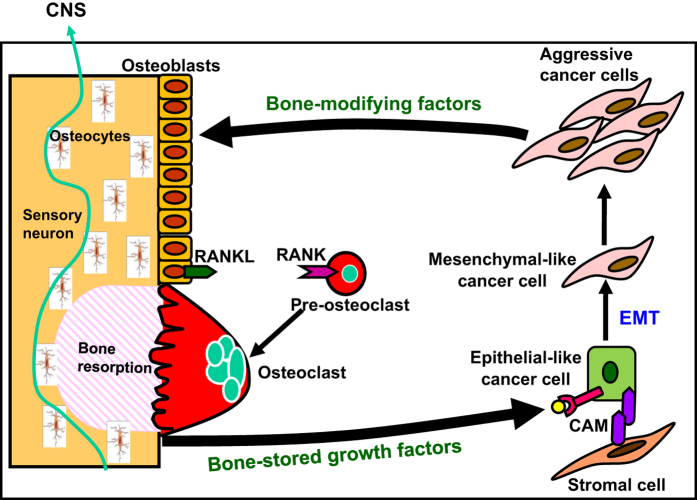Figure 2.
Vicious cycle between osteoclasts and cancer cells in the bone. Bone-derived growth factors, (GFs) such as insulin-like growth factors (IGF) and transforming growth factor-β (TGF-β), promote proliferation and inhibit apoptosis and stimulate epithelial–mesenchymal transition (EMT) and production of bone-modifying cytokines such as parathyroid hormone-related protein (PTH-rP), prostaglandin E2 (PGE2) and interleukin-11 (IL-11) in bone-colonizing cancer cells, supporting the ‘Seed and Soil' theory proposed by Paget.91 These bone-modifying factors further stimulate osteoclastic bone resorption via activation of receptor activator of the nuclear factor-κB (RANKL)/RANK pathway in osteoblasts and osteoclasts, thereby further increasing the release of bone-stored growth factors, thus establishing ‘vicious cycle' between bone-resorbing osteoclasts and bone-colonizing cancer cells.3,4,5,6 Some bone-colonizing cancer cells reside in stromal cell niche via cell–cell contact mediated by cell adhesion molecules (CAMs) and stay dormant or undergo EMT and acquire further aggressiveness. Sensory neurons innervate bone. Role of osteocytes in bone metastasis needs to be elucidated. CAM, cell adhesion molecule, CNS, central nervous system, EMT, epithelial–mesenchymal transition, RANK, receptor activation of NF-κB, RANKL, receptor activation of NF-κB ligand.

